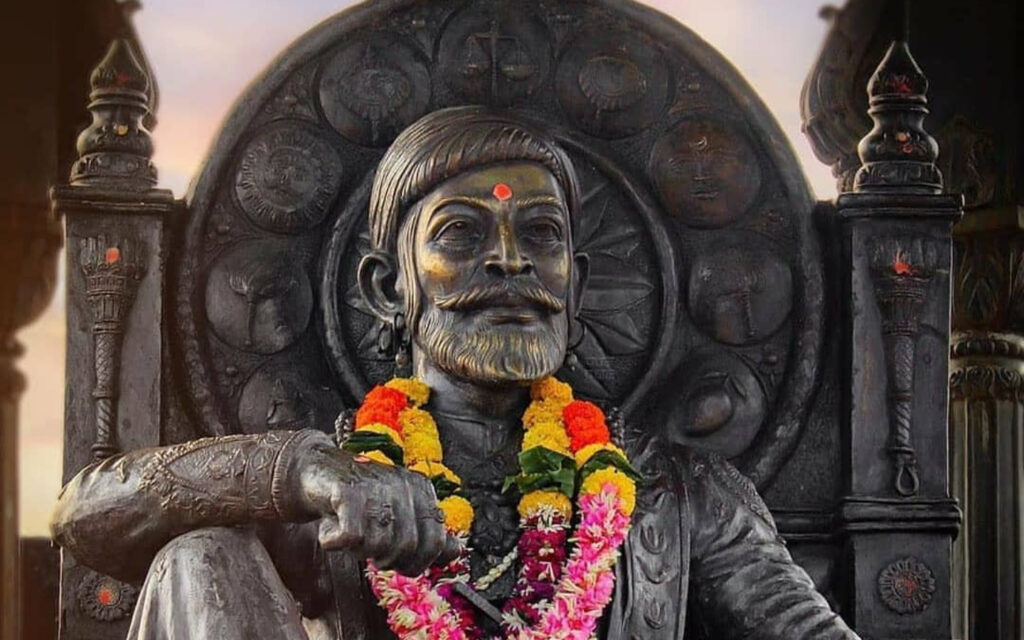In the annals of Indian history, few names shine as brightly as that of Chatrapati Shivaji Maharaj. A warrior, a visionary, and a true leader, Shivaji Maharaj’s legacy continues to inspire generations. Among the many symbols of his indomitable spirit and martial prowess, one stands out – the Wagh Nakh, also known as the Tiger Claw.

The Origin of the Wagh Nakh
The Wagh Nakh, literally translating to “Tiger Claw” in Marathi, is a fearsome weapon that was closely associated with Chatrapati Shivaji Maharaj. Its origins can be traced back to India, where it was initially designed as a tool for self-defense and hunting.
The Wagh Nakh is a hand-held weapon featuring several sharp, curved blades resembling a tiger’s claws. These blades were often reinforced with metal and attached to a metal frame that could be worn on the hand. The weapon was ingeniously designed to be concealed within the palm, allowing Shivaji Maharaj to carry it discreetly.

The Symbolic Power of the Wagh Nakh
The Wagh Nakh was more than just a weapon for Shivaji Maharaj; it was a symbol of his courage, fearlessness, and unwavering resolve. Just as a tiger’s claws are its primary means of defense, Shivaji Maharaj wielded the Wagh Nakh as a symbol of his readiness to defend his people and his kingdom.
The mere sight of the Wagh Nakh struck fear into the hearts of Shivaji Maharaj’s adversaries. It served as a reminder that he was not just a warrior but a formidable force of nature, much like the tiger. Shivaji Maharaj’s mastery of this weapon was legendary, and it became an integral part of his persona.
The Practicality of the Wagh Nakh
While the Wagh Nakh held immense symbolic value, it was also a highly practical weapon. Its concealed nature allowed Shivaji Maharaj to surprise his enemies, catching them off guard in close combat. The curved blades were effective for slashing and piercing, making it a deadly weapon in skilled hands.
Additionally, the Wagh Nakh’s design made it suitable for a variety of combat scenarios, from one-on-one duels to guerrilla warfare in the rugged terrains of the Western Ghats. Shivaji Maharaj’s guerrilla tactics, combined with his mastery of the Wagh Nakh, made him a formidable adversary for the mighty Mughal Empire.
Certainly, here’s the additional information on how Chatrapati Shivaji Maharaj killed Afzal Khan:
The Encounter with Afzal Khan

One of the most significant and daring moments in Chatrapati Shivaji Maharaj’s life was his encounter with Afzal Khan. Afzal Khan was a formidable and imposing general of the Adil Shahi dynasty, sent with the mission to capture or eliminate Shivaji.
In a dramatic showdown in 1659, Afzal Khan and Shivaji agreed to meet in the Pratapgad Fort. The meeting was arranged, but both leaders harbored deep suspicions of each other’s intentions. Afzal Khan, known for his large stature and strength, intended to use his physical advantage to overpower Shivaji.
As the two leaders met, Afzal Khan attempted to embrace Shivaji, but Shivaji, always vigilant, had a plan. Concealed within his clothing, Shivaji wore a “bagh nakh” or tiger claw, a weapon with sharp, curved blades. When Afzal Khan embraced him, Shivaji swiftly struck, using the tiger claw to disembowel Afzal Khan.
The encounter turned into a deadly struggle, with Shivaji’s loyal men nearby to aid their leader if needed. Afzal Khan’s plan had backfired, and he lay mortally wounded. Shivaji’s quick thinking and courage had secured his victory and established his reputation as a formidable warrior.
This historic event showcased Shivaji’s strategic brilliance and his unwavering commitment to defending his kingdom against formidable foes like Afzal Khan. It remains a pivotal moment in the legacy of Chatrapati Shivaji Maharaj’s life and his contributions to the Maratha Empire.
Legacy and Inspiration
The legacy of Chatrapati Shivaji Maharaj and his iconic Wagh Nakh continue to inspire not only in India but around the world. The Tiger Claw represents the indomitable spirit of a man who dared to challenge the status quo and build a kingdom based on principles of justice, valor, and self-reliance.
Today, the Wagh Nakh is celebrated not just as a historical artifact but as a symbol of courage and fearlessness. It serves as a reminder that even in the face of seemingly insurmountable odds, one can rise like a tiger and defend what is rightfully theirs.
In conclusion, Chatrapati Shivaji Maharaj’s Wagh Nakh, the Tiger Claw, is more than a weapon; it is a symbol of bravery and unwavering determination. It encapsulates the essence of a leader who left an indelible mark on Indian history and continues to inspire generations with his legacy of valor and resilience.
Original price of Wagh Nakh :
“The exchange of tiger claws requires individual responsibility and diligence,” it was emphasized. As a result, a sum of Rs 50 lakh was allocated for the delegation’s journey. The chief minister has granted consent to the aforementioned proposal, it further stated.
Read More :

